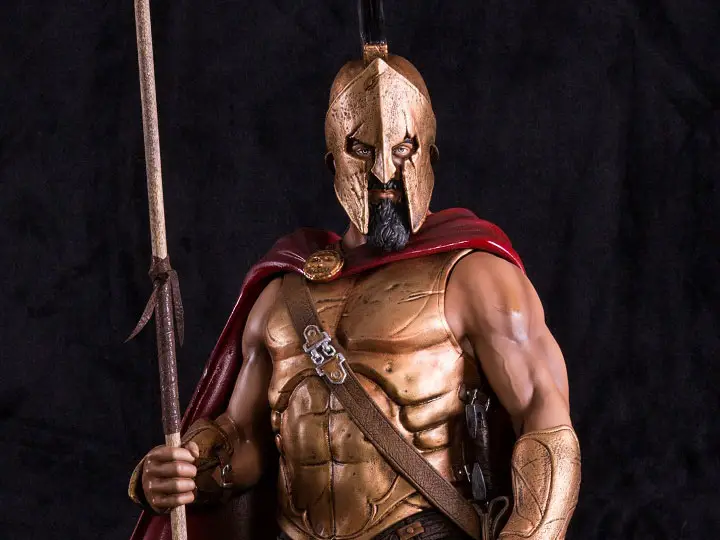Warriors throughout history have etched their names into the annals of time through acts of unparalleled strength, courage, and strategy on the battlefield. From ancient conquerors to medieval knights, these extraordinary individuals have risen above the rest, leaving behind a legacy that continues to inspire us.
Let us explore the extraordinary lives of the ten most legendary warriors in history, delving into their astonishing accomplishments and the enduring legacies.
Arminius
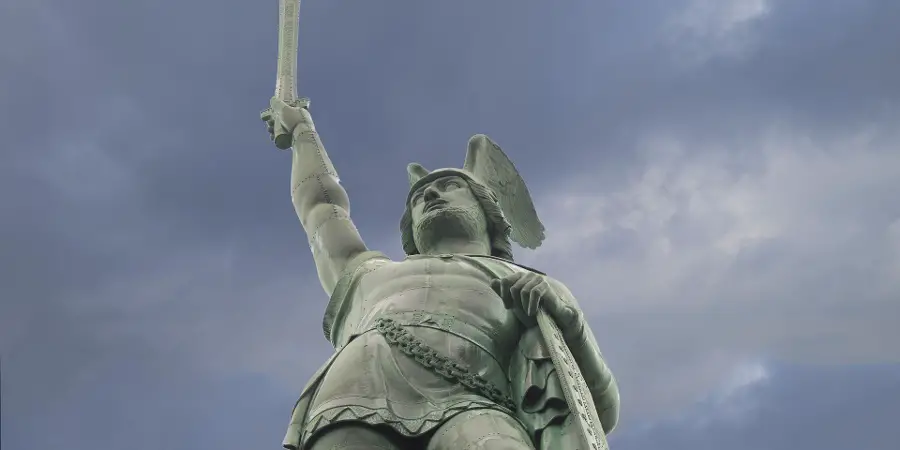
Arminius, a Roman officer turned chief of the Germanic Cherusci tribe, is best known for his leadership at the Battle of the Teutoburg Forest in 9 AD.
In this historic battle, Arminius led an alliance of Germanic tribes, decimating three Roman legions and driving the Romans out of Germany.
The devastating defeat suffered by Rome at the hands of Arminius marked a turning point in history.
In retaliation, there was more fighting and Arminius won some more victories. His wife was captured and his son was forced to grow up in Roman custody.
Although he met a tragic end, betrayed and killed by rival Germanic chiefs, Arminius’ prowess on the battlefield remains legendary.
Lady Trieu
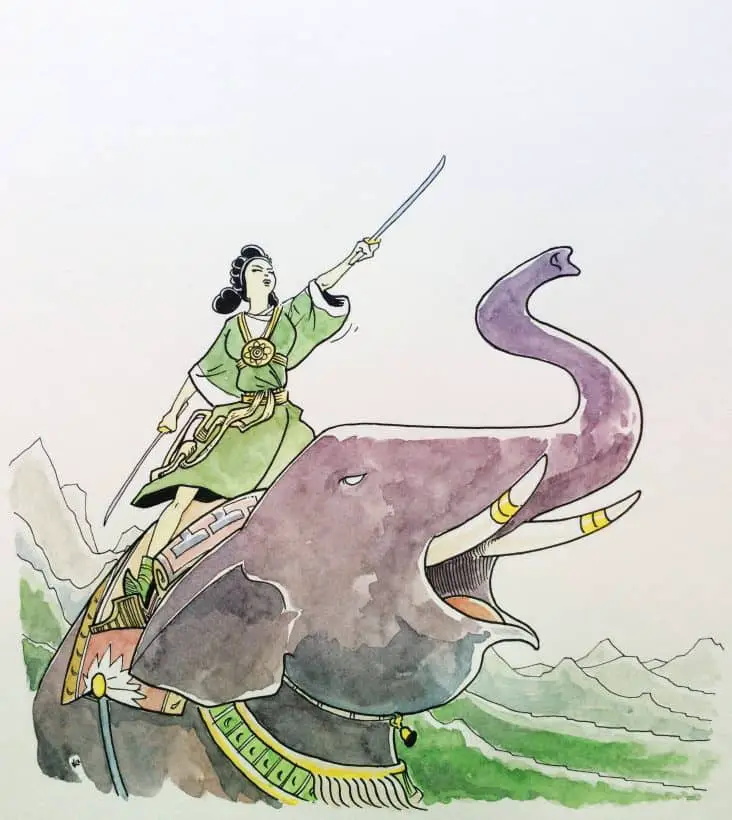
Lady Trieu (226-248) was a remarkable female warrior who emerged during the occupation of Vietnam in the 3rd century. She was born into a wealthy family in the northern Vietnamese province of Ninh Binh.
Tragically, she lost her father during her early years, leaving her mother to single-handedly nurture her to be strong and independent.
When the Chinese state of Eastern Wu invaded Vietnam in 247, Lady Trieu led a rebellion against the invaders. She was a skilled warrior and a charismatic leader. She rallied the Vietnamese people to her cause, and her forces were able to inflict heavy casualties on the Chinese army.
The Chinese eventually defeated Lady Trieu’s forces, but she never gave up hope. She continued to fight for Vietnamese independence until she died in 248. She was only 22 years old.
Lady Trieu, a revered figure in Vietnam, has attained the status of a national hero. Her remarkable bravery, unwavering determination, and selfless sacrifices for her homeland have etched her name in the annals of history. She serves as a profound inspiration not only to women but also to men worldwide.
Galvarino
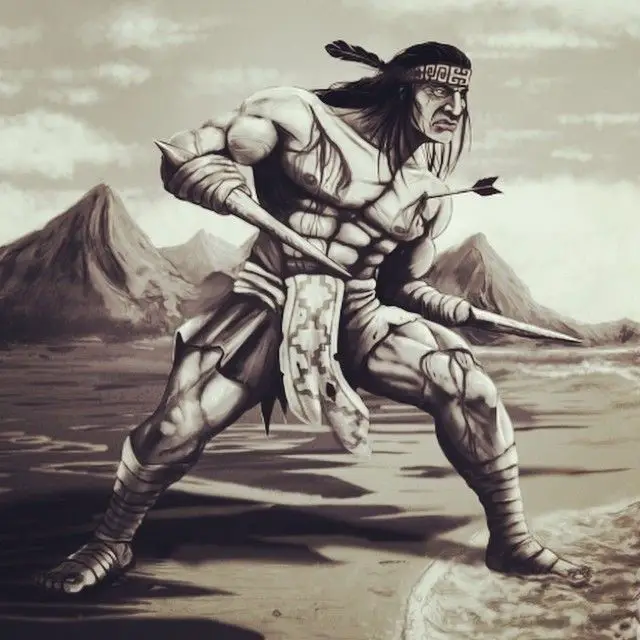
A native warrior who not only overcame a brutal injury but made it into the enemy’s worst nightmare.
Galvarino was a Mapuche warrior who defied the Spanish conquerors in Chile during the 16th century. He was captured in battle in 1553 and had both of his hands cut off as punishment. Despite this brutal injury, Galvarino refused to submit to the Spanish. He returned to the battlefield with wooden clubs strapped to his wrists, and he became a symbol of resistance for the Mapuche people.
Galvarino’s story serves as a reminder of the Mapuche people’s tenacity and fortitude. They fought the Spanish for more than 300 years before finally succeeding in gaining their independence. Galvarino is revered as a hero by the Mapuche people, and people all over the world are inspired by his life story.
Audie Murphy

Audie Murphy, an acclaimed American soldier, actor, and songwriter, emerged as a true national hero amid World War II. He displayed extraordinary bravery and was honored by France and Belgium in addition to receiving numerous military combat awards from the United States Army.
Murphy was the most decorated American soldier of the conflict thanks to his exceptional combat abilities.
He engaged in fierce combat, killing hundreds of Germans as a result of his extraordinary bravery.
One heroic deed involved Murphy bravely jumping onto a burning tank destroyer and firing the machine gun at the enemy.
His heroic actions earned him the Medal of Honour, which he received at the age of 19.
He received this honor for his incredible achievement of repelling a company of German soldiers for an hour. This occurred in January 1945 in France during the Colmar Pocket battle.
Murphy led a successful counterattack despite being wounded and out of ammunition.
After the war, Murphy made the switch to acting in films, appearing in over 40 of them. He endured post-traumatic stress disorder, a result of his experiences during the war, for the rest of his life, though. Murphy unfortunately experienced financial hardships as a result of his gambling and subpar investments, which ultimately led to his ruin.
Audie Murphy’s life was tragically cut short on May 28, 1971, when he passed away in an aircraft accident. He was buried at Arlington National Cemetery with full military honors in recognition of his valiant service to his country.
Lü Bu
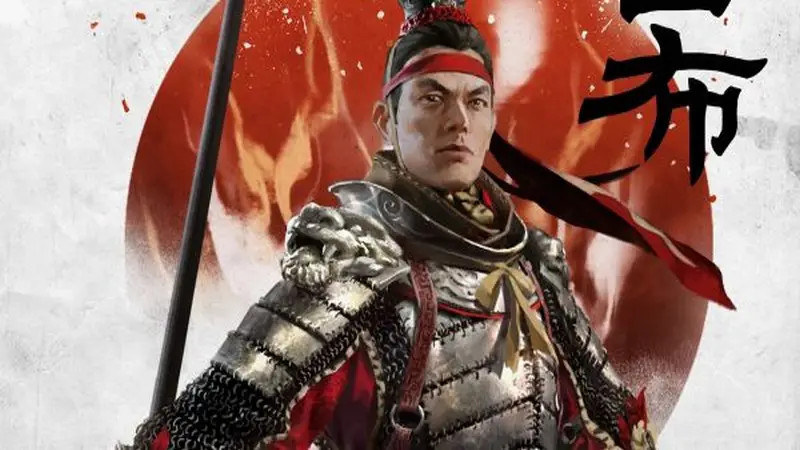
Fengxian, courtesy name Lü Bu, was a warlord and military general who lived during the late Eastern Han dynasty of Imperial China.
He was known for his extraordinary strength and martial prowess, and was nicknamed the “Flying General”. He was also an accomplished horseman and archer, and his steed, the Red Hare, was reputed to be one of the world’s fastest horses.
Lü Bu was a complex and contradictory figure. He was capable of remarkable acts of bravery and heroism, but he was equally impulsive, reckless, and quick to anger.
Although he was well known for his loyalty to his friends and allies, he was also quick to betray them if he felt they had done him wrong.
He was a brilliant strategist and tactician, but he was also a poor administrator and manager.
Lü Bu’s turbulent life came to an end in 199 CE when he was defeated and killed by Cao Cao. He was only 36 years old.
Simo Häyhä
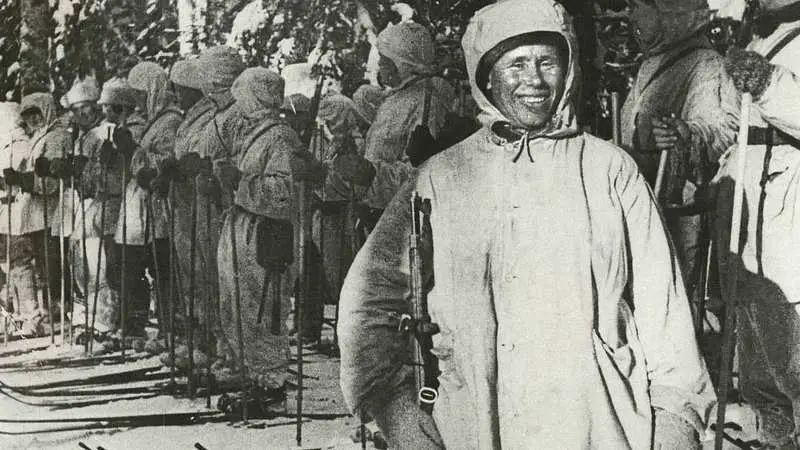
Few soldiers are as famous as Simo Häyhä, a Finnish sniper who served during the Winter War of 1939-1940. In less than 100 days, he killed over 500 Soviet soldiers, making him the deadliest sniper in history.
Häyhä was deadly at long range, using a Finnish-made M28/30 rifle. He was also deadly at close range, using a Suomi KP-31 submachine gun.
The Soviets quickly gave him the nickname “The White Death” because of his white camouflage and his ability to seemingly appear and disappear from the battlefield.
Häyhä didn’t use a telescopic sight, which gave him an advantage over other snipers.
A telescopic sight forces a sniper to raise their head, making them more visible to the enemy. Telescopic sights are also vulnerable to cold weather.
Häyhä, on the other hand, used iron sights and the naked eye, even in the poor light of a Finnish winter.
The Soviets were determined to kill Häyhä, and they almost succeeded on March 6, 1940. Häyhä was spotted by a Soviet sniper and shot in the lower left jaw.
The shot should have killed him, but Häyhä survived, albeit with severe injuries. He was rescued by Finnish soldiers and taken to a field hospital.
Häyhä’s face was badly disfigured by the injury, but he recovered fully. He lived a long and peaceful life, dying in 2002 at 96.
Miyamoto Musashi

Miyamoto Musashi was a Japanese swordsman, philosopher, strategist, writer, and rōnin. He was a true Renaissance man, with interests and talents in many areas.
Musashi was born in 1584 in the village of Miyamoto, in Japan’s Harima province.
When he was young age started his martial arts training, and at just 13 years old, he had already killed his first opponent.
Throughout his life, Musashi fought in over 60 duels, and he is said to have never lost. His most famous duel was against Sasaki Kojirō, another renowned swordsman. The duel took place on a small island off the coast of Japan, and Musashi won by defeating Kojirō with a wooden sword.
After the duel, Musashi retired from dueling and devoted himself to writing and teaching. He wrote several books on swordsmanship and philosophy, including The Book of Five Rings, which is still studied by martial artists today.
Musashi died in 1645 at the age of 61. He is considered one of the greatest samurai of all time, and his legacy continues to inspire people around the world.
Spartacus
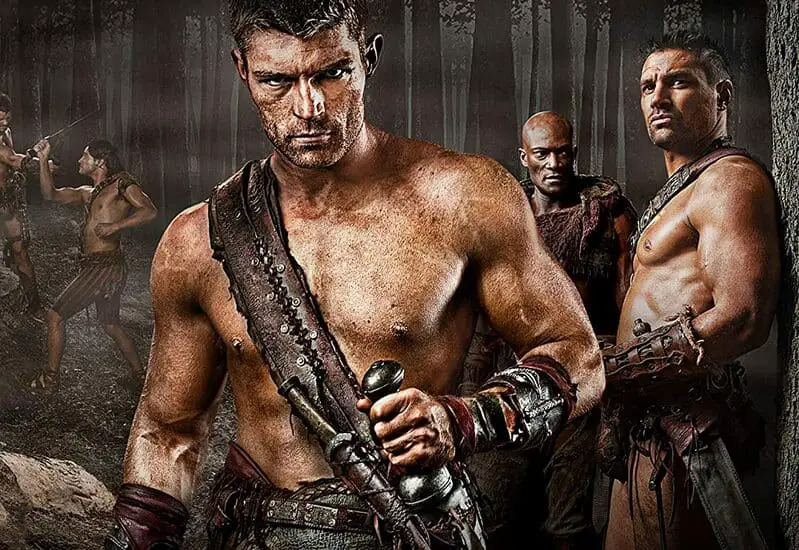
Spartacus was a Thracian gladiator who led a slave revolt with tens of thousands of soldiers with Cryxus, Gannicus, Castus, and Oenomaus. He defeated the Roman forces more than half a dozen times and marched up and down the Italian peninsula until his death in April 71 B.C.
Spartacus and his small group of escapees acquired gladiator weapons in a passing cart and went to the Vesuvius Mount. Along the way,
recruited Slaves in the countryside raided for supplies and more recruits. Rome did not react seriously to the growing strength of Spartacus. The military of the Republic fought in Spain, South-East Europe, and Crete at the time of its breakout.
An escaped group of slaves was not seen to present Roman soldiers with a serious challenge.
Spartacus continued to trap and defeat Roman units while slaves were freeing other slaves and collecting supplies. Back in Rome, a large army headed by Lucius Gellius Publicola and Gnaeus Cornelius Lentulus Clodianus was sent by the impatient Senate.
In the spring of 72 B.C. Spartacus may have had 40,000 soldiers, some of whom stayed in Southern Italy with their co-leader Crixus while the rest progressed towards the Alps.
Gellius’ Roman forces captured Crixus and murdered the leader together with many of his rebels. Then Gellius went from the south to Spartacus while Lentulus, apparently ahead of Spartacus, walked from the north. Between the two armies, Spartacus was certainly fitted with better arms and armor than the Romans.
But neither commander appears to have reckoned with it that Spartacus had established an enormous cavalry force that destroyed Romans off-guard.
Leonidas I
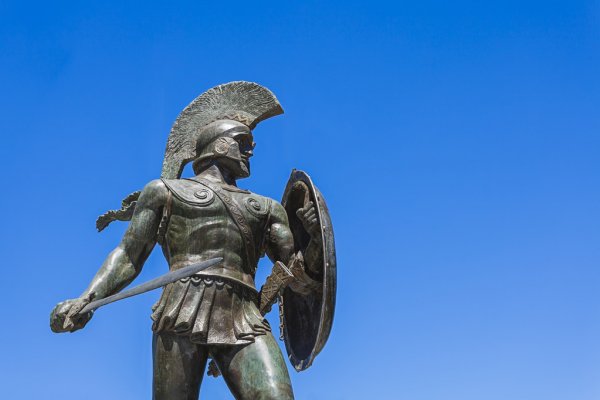
Leonidas I was the king of the Greek city-state of Sparta and the seventeenth king of the Agiad dynasty, which claimed descent from the mythological half-gods Heracles and Cadmus. He is one of the most well-known and remembered figure in Greek history and was one of Sparta’s greatest military leaders.
Leonidas’s courage and cunning were on full display in the famous Battle of Thermopylae in 480 BC. With only 300 Spartans and a small force of allies, Leonidas stood against the vast Persian army of Xerxes I. For three days, the Greeks held the pass against overwhelming odds, inflicting heavy casualties on the Persians. Eventually, the Greeks were betrayed by a local Greek, and the Persians were able to flank the Greek position. Leonidas and his men fought to the death, buying time for the rest of the Greek army to escape.
Leonidas’s sacrifice at Thermopylae inspired the Greeks to victory over the Persians. He is remembered as a hero of Greece, and his story has been told and retold for centuries.
Alexander the Great
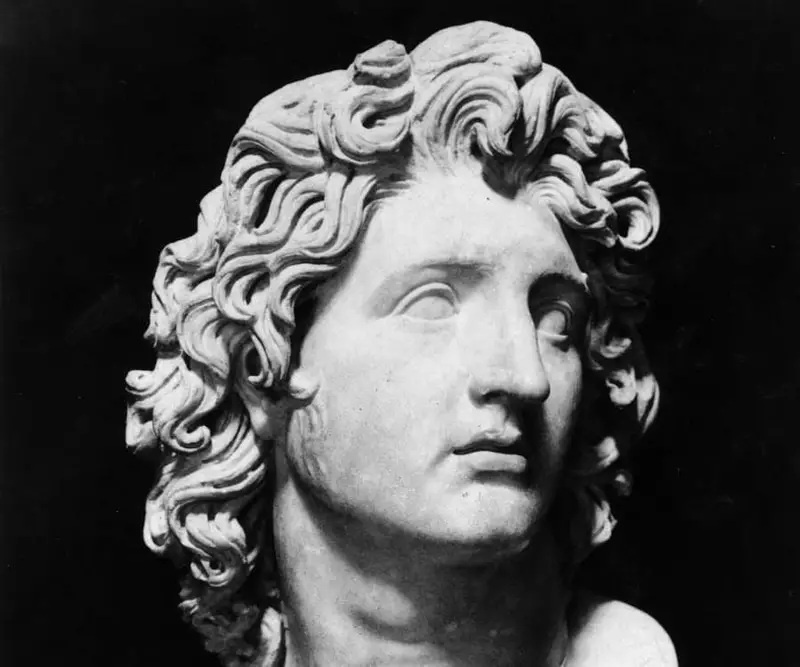
Alexander the Great was an ancient Macedonian ruler who became king of Macedonia and Persia. He was one of the greatest military minds in history and established the greatest empire in the ancient world.
Alexander’s father, Philip II, was a great military leader himself. He called on the revered philosopher Aristotle to tutor his son when Alexander was 13 years old. Aristotle sparked Alexander’s interest in literature, science, medicine, and philosophy.
When Philip went to battle, he left Alexander in charge of Macedonia. Alexander was only 16 years old at the time. In the Battle of Chaeronea, Alexander led a cavalry charge against the Sacred Band of Thebes, a unit of elite soldiers who were said to be all male lovers. Alexander’s cavalry decimated the Sacred Band, and he showed his military prowess at a young age.
In 336 BC, Philip II was assassinated. Alexander, who was only 20 years old at the time, became king of Macedonia. He quickly consolidated his power, murdering his rivals and suppressing rebellions in northern Greece.
Alexander then set out to conquer the Persian Empire. He was incredibly successful, and his empire eventually stretched from Greece to India. Along the way, he founded many towns and cities, which helped spread Greek culture throughout the region.
Alexander the Great died in 323 BC at 32. His death was followed by a period of chaos and instability, but his empire left a lasting legacy. The Hellenistic period, which lasted from Alexander’s death to the Roman conquest of Greece in 146 BC, was a time of significant cultural and intellectual advancement. Alexander the Great is remembered as one of the greatest and most influential leaders in history.
